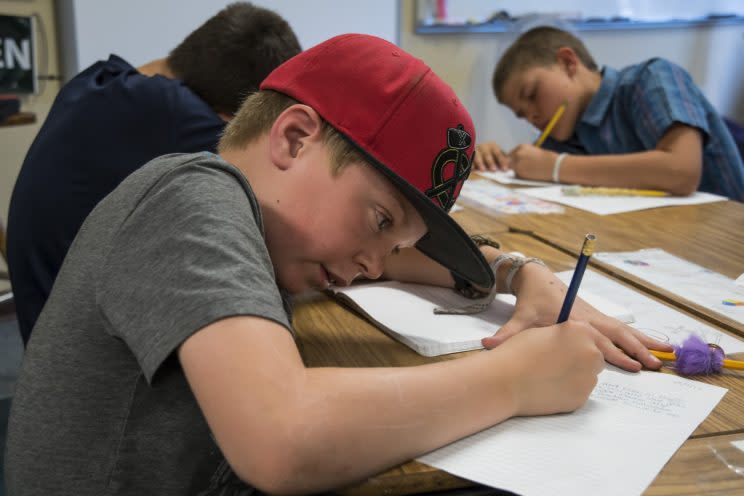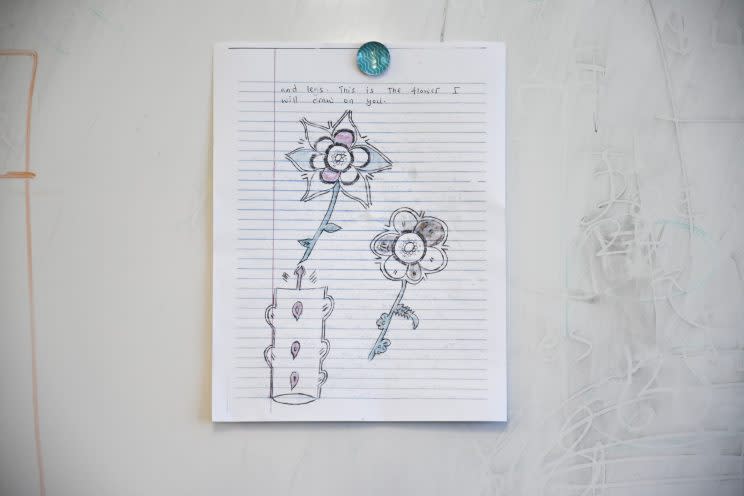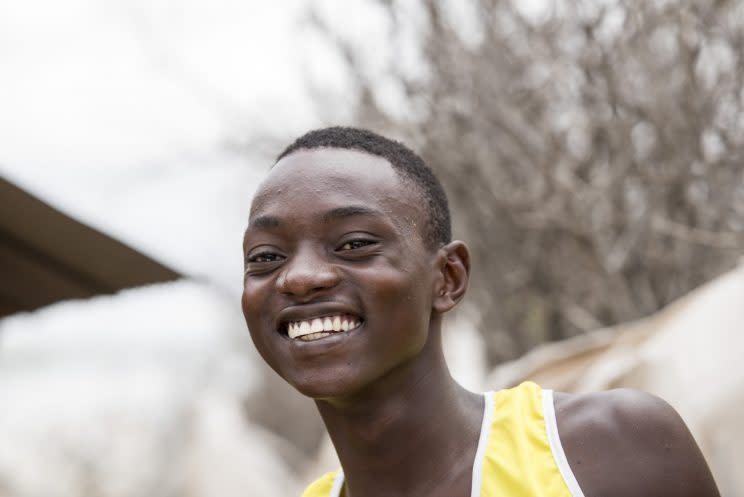‘Kid-driven’ hope, from Boulder to a refugee camp in Kenya
Eleven-year-old Safiyo Noor Hassan has spent the majority of her life as a refugee — ever since she and her family fled the war in Somalia in 2010 and landed in Dadaab, a massive refugee camp in eastern Kenya. It is there that she is growing up and going to school, where she and her friends like to draw flowers on each other’s arms and legs, as she explained to 11-year-old Dexy Payne of Boulder, Colo., in a letter.
“One day, we will meet, and I will draw a flower on your hands and legs,” Safiyo said.

Dexy and his classmates had been learning about the refugee crisis all winter when they decided to try to personally connect with kids their own age living in camps around the world. After brainstorming ways to correspond, the students reached out to several state government officials for help. They never received a response, so Zach Fink, the students’ fifth grade teacher at High Peaks Elementary School, reached out on behalf of his students to CARE USA, an international humanitarian agency that delivers emergency relief and long-term development projects. The NGO was originally founded to send parcels for people struggling and starving in the aftermath of World War II.
“The premise of our letters will be that we sincerely care for their well-being,” Fink pitched to CARE in February. “We can’t imagine how scary and saddening it must be, so we just want to send them our love.”
“I really wanted to help make it happen,” Fink told Yahoo News. “My students felt it was really important to let these kids who are refugees, an often-forgotten group of people, know that they cared about them.
“This was entirely kid-driven.”

Dexy said he “maybe fainted” or “at least fell out of the chair” when, weeks later, Fink told the class that they would be receiving letters in the coming weeks from kids in Dadaab.
“I was so happy,” said Dexy. When the stack of letters arrived, he chose one from Safiyo. He read it once. Then he read it again.
“I still miss my country,” Safiyo wrote. “We had many banana farms, but I’m told they are all gone. At the camp, there are no rivers or lakes. Water comes from the borehole. Me and my sisters, we fetch water very early before we go to school.
“I love drawing,” she added. “When we draw on our hands and body, we look beautiful.”
On the back of her letter was a giant, blue-stemmed flower with pink and white petals. “This is the flower I will draw on you.”

Dexy wrote back: “I think you are an amazing drawer, and I think the flower you drew is so gorgeous. Do you take art class in school? In my school, we do. But you are a much better artist than me.”
June 20 marks World Refugee Day, a day intended to commemorate the strength, courage and perseverance of millions of refugees around the world. There are now more displaced people around the globe than there have ever been. An unprecedented 65.6 million people have been forced from their homes, according to the UN Refugee Agency (UNHCR). Among them are nearly 22.5 million refugees, and more than half of those are under the age of 18. More than half of refugees worldwide come from three countries: South Sudan, Afghanistan and Syria.
Dadaab, which is run by UNHCR, is made up of five camps and hosts more than 245,000 refugees, making it the second-largest complex in the world.

Despite the many differences in the lives of children in Boulder and Dadaab, the letters from both sets of kids all shared the same themes: family, friends, hobbies and goals, said Fink. “A kid is a kid.”
Michelle Nunn, president and CEO of CARE, echoed Fink’s observations. “When you ask children to write each other, no matter how far apart they may live, they end up talking about the same things: dancing, drawing, playing games and, perhaps importantly, what home means to them.
“I think we adults can learn from them,” Nunn continued. “People in this world ultimately want the same things, and it’s up to us to connect with those in the human family who are facing incredible challenges, who have lost their homes and who simply want to know other people out there care.”
Twelve-year-old Elisa Elisama Mangu wrote in a letter to Dexy’s friend Blake that his dream was to one day go to university, save the world “and stop people fighting.” He also told Blake that he loves to dance. Elisa found out that dancing is something Blake happens to love to do as well.
“Blake, just be ready for me,” Elisa said, challenging his American pen pal to a dance competition.

“I would do anything to meet Safiyo,” Dexy said. “And Blake would do anything to meet Elisa. It would be so amazing if Elisa and Blake could have their dance-off.”
In his letter back to Safiyo, Dexy drew a sun. Underneath, he wrote, “Everyone sees the sun. I do, too! The sun brings us all together.”
Weeks later, when she received Dexy’s letter, Safiyo also received a set of photos. Unbeknownst to Fink and his students, in the days after receiving the letters from kids in Dadaab, CARE had created custom tattoos from the flower Safiyo had drawn. Dexy was among the first students to grab one from the stack, peel back the plastic and press it against his hand. A coordinator from CARE took photos of Fink’s class in Boulder, all smiles and covered in Safiyo’s flower, and sent them to Dadaab.
“The tattoos were so cool — it was like Safiyo kinda did draw her flower on me, like how she wanted to, even though she was still halfway around the world,” said Dexy. “We really do like the same things. We’re all just kids.”

Read more from Yahoo News:


